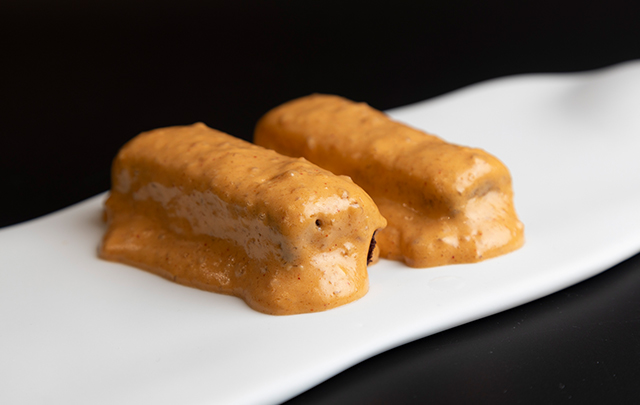News
When the lab brings flavour to the kitchen

David Chamorro, director of the Food Idea Lab, takes us on a taste journey through peptides, tryptophans, myrcenes and enhancers to push the boundaries of flavour
David Chamorro arrived at Fusión Alimentos de España in Madrid ready to turn the auditorium into a laboratory. "Peptides, flavour enhancers, technological sugars, protein hydrolysates, fats rich in omega-6... There are a lot of elements that haute cuisine does not use", he explained to the audience, which included the likes of Ferran Adrià and Jordi Roca, who were taking notes between their seats. From the Food Idea Lab, of which David is the director, they approach the latest advances and research applied by the food industry to make food tasty and addictive. "It's about bringing something terribly complex to something terribly mundane like food", he says.
There is one ingredient that reigns supreme in his work. "Taste is the key, and taste buds work with flavours”. From there, their taste journey is developed through flavour, using umami, but we wanted to go one step further with ribonucleotide, "which increases flavour by 15 to 20 times", or disodium guanylate, "which increases it by 25 times". This process also takes into account the sense of smell and its aromas. And this is where terpenes come in, "a large and diverse class of organic compounds derived from isoprene, a hydrocarbon with five carbon atoms," confessed Chamorro, who might as well have been explaining everything in a white coat instead of a jacket.
"There are more than 30,000 different terpenes, but we've chosen to focus on one, myrcene, which has a slightly grassy smell. It increases appetite and stimulates the sense of smell, so from the plate we start to touch the brain with stimuli that it will like”. Something similar happens with tryptophan, which "gives a feeling of satiety and well-being when we mix it with complex sugars because it produces insulin," he recalls.
The journey through the laboratory took the Food Idea Lab team to the gut, because not all fats produce the same sensations in the body, and this may be one of the reasons why large industries use "oils rich in omega 6, such as soya or corn oil". The search for flavour continues with opiates, "which can be extracted from dairy products, green leaves, gluten, soya or meat", and Chamorro recalls their legal use in cooking.
The visual factor
To all this we must add other factors such as the visual, "we like red, yellow or purple foods more", the olfactory ("we all like the smell of freshly baked bread, coffee or chocolate") and the gustatory ("umami, the salty and sweet dominates over the sour or bitter"), before focusing on his big bet "and the great unknowns of the kitchen, the peptides". "A peptide is nothing more than a protein broken down to produce flavour, either by fermentation or by a physical or chemical process".
With their work, they have created different peptides (FIL1, FIL2, FIL3) that can be used by any professional, incorporating them into their recipes "to give meaty, kokumi or metallic liver flavours to any food without using animal proteins", Chamorro revealed. One of these is the 'Delicious Peptide', "which has no specific taste but gives a delicious sensation", and the 'Beef Peptide', "which gives a sensation in the mouth similar to that of beef proteins". A whole journey through the laboratory to increase the addictive stimuli and push the boundaries of taste.
